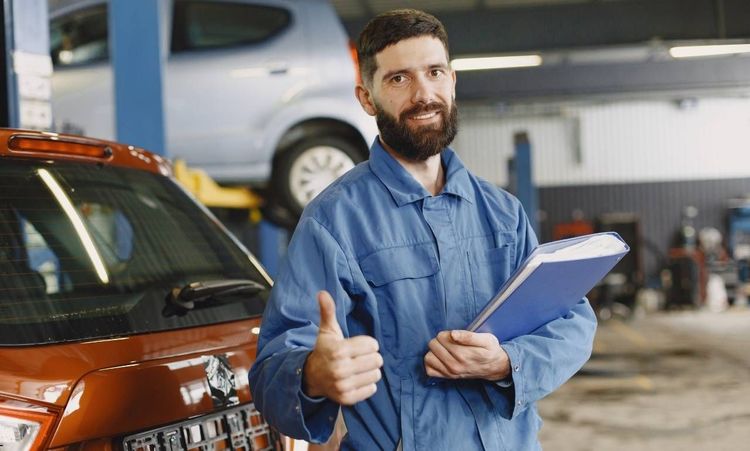Car accidents are stressful. You’re shaken, the car’s damaged, and your mind races with what to do next. You’ll likely call your insurance provider and maybe a friend or two for help. But there’s another call that’s just as important—your local auto body shop.
These professionals play a much bigger role than people realize. They don’t just fix dents and paint scratches. They guide you through one of the trickiest parts of an accident: the insurance claim. In fact, they’re often the reason your claim gets approved quickly—or denied if the steps aren’t done right.
If you’ve ever wondered how auto body shops support your car accident claim, this article will lay it all out.
The Auto Body Shop's Role in Damage Assessment
After an accident, your first priority is safety. Once everyone’s okay and the police have documented the scene, attention turns to your vehicle. This is where auto body shops come into play.
They act as the first line of defense in determining what needs fixing, what can be salvaged, and what your insurer will likely cover.
Initial Inspection and Preliminary Estimate
The process starts with an initial inspection. This usually happens right after your car arrives at the shop. Sometimes it’s towed in. Other times, you drive it there yourself—slowly and nervously.
During this step, technicians look at the outside damage. They check panels, doors, lights, and the overall alignment. Anything visibly damaged gets noted. These findings form the base for what’s called a “preliminary estimate.”
This estimate helps your insurance company understand what they might be paying. It also gives you a rough idea of costs. Think of it as the first draft in a longer negotiation. It's not perfect. It's not final. But it gets the ball rolling.
Digital images often accompany this estimate. Shops send photos of dents, cracks, or alignment issues directly to your insurer's claim portal. Most repair shops today use software that integrates with the insurance system. This helps speed things up.
Complete Inspections
Now here’s where things get serious. The initial look can only reveal so much. For a real assessment, technicians need to dig deeper. This is called the "tear-down" phase.
Once panels are removed, they can see the internal damage. Think bent frames, damaged radiators, or broken suspension parts. These aren’t visible from outside. But they’re critical for your safety.
Modern shops use tools like laser measurement systems, diagnostic scanners, and factory-specific software. These aren't just for show. They help uncover issues that could’ve been missed.
This stage often leads to a revised estimate. These changes are shared with the insurer. They’re called “supplemental claims.” These extras must be approved before work continues. Without approval, the shop has to pause repairs.
Detailed Repair Estimates
After identifying all the damage—visible and hidden—the shop creates a full repair estimate. This is the final game plan. It lists every part that needs replacing. Labor hours. Paint time. Materials. It even breaks down the type of parts used—OEM, aftermarket, or recycled.
Shops usually prefer OEM parts. These come directly from your car’s manufacturer. But insurance companies often push for cheaper alternatives. A good shop will advocate for OEM use when safety is a concern.
This estimate is detailed. It’s also the version that your insurance provider needs before approving the full repair.
How Auto Body Shops and Insurers Work Together
Think of this like a relay race. One handoff must be perfect, or the whole thing breaks down. Your auto body shop and insurance company must communicate clearly. Otherwise, delays, misquotes, or missed approvals will slow the process.
Many shops today are part of what’s called a Direct Repair Program (DRP). This means they’ve been vetted by insurance companies. They can start work faster, get quicker approvals, and handle more of the paperwork.
Here’s how it typically works:
- The shop sends the estimate and images to your insurer.
- The insurance adjuster reviews everything—sometimes remotely.
- If approved, payment is released or authorized.
- If additional issues arise mid-repair, the shop submits a supplement.
- The process repeats until everything is fixed.
This relationship helps reduce back-and-forth. You don’t want to be the one calling your insurer 15 times a week. Let the shop handle it. They know the language. They know the process. And most importantly, they know what’s fair.
Repairs and Finalization Process
Now that everything is approved, the shop begins actual repairs. But it’s not just a wrench-and-hammer job. It’s a detailed process that follows specific standards.
OEM Repair Procedures and Parts Ordering
Certified shops follow manufacturer guidelines. These are often hundreds of pages long. They cover how each part should be installed or welded. This matters—especially for safety features like airbags or crumple zones.
Next is parts ordering. The shop orders the parts listed in the estimate. If OEM parts aren’t available, they’ll ask the insurer for permission to use used or aftermarket ones.
Delays happen here. If a bumper or sensor is on backorder, it can hold up everything. Good shops keep you updated. They’ll tell you what’s happening, what’s pending, and what they’re doing to keep things moving.
Paint Matching and Final Touches
After structural repairs come cosmetics. Panels are sanded, primed, and painted. Digital color-matching tools help ensure the new paint matches the original finish. There’s a science to it.
Shops use a paint code from the manufacturer, but sunlight and wear can fade paint over time. So the paint team blends the new coat with the existing color. This gives it a seamless finish.
Once that’s done, a protective clear coat is added. It gives the car that glossy, fresh-off-the-lot look. But more importantly, it protects against rust and UV damage.
Post-Repair Inspections
Before handing back the keys, reputable shops run a full post-repair inspection. They check wheel alignment, sensor calibration, and even test-drive the vehicle. This ensures everything functions as it should.
Many shops also offer a lifetime labor warranty. That means if the paint peels or something rattles later, they’ll fix it for free. Always ask about warranty terms before signing off.
Handling Final Paperwork and Payment
With repairs done, there’s just one thing left: paperwork. Shops handle most of it. They submit final invoices to the insurer. If your policy covers direct billing, you only pay the deductible.
Some shops also provide a completion certificate. Keep this for your records. It may be useful if you sell the car later or need to prove repairs were done professionally.
If you paid out of pocket, the shop will help you submit receipts for reimbursement. They’ve done this before. Let them guide you.
Conclusion
So, how do auto body shops support your car accident claim? They’re with you every step of the way. From assessing damage and working with insurance to repairing your car the right way, they handle the heavy lifting.
You don’t have to learn every detail about insurance policies or repair codes. That’s their job. Your job? Choose a shop you trust.
Ask questions. Get updates. And make sure they’re certified. The right shop won’t just fix your car—they’ll protect your claim, your safety, and your peace of mind.




